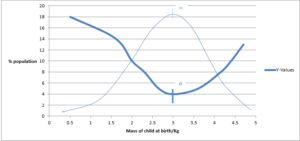Genetic information, variation and relationships between organisms (AQA AS Biology) PART 3 of 6 TOPICS
|
Genetic diversity and adaptation:
As the number of alleles increases so does genetic diversity in a population.
Genetic diversity allows natural selection to occur.
Evolution is a change in a populations’ alleles and genotypes from generations to generations. Therefore it should be considered at a population level. Five factors affect the proportion of homozygote and heterozygote:
- Genetic drift: This is a change in the gene pool that occurs in a small population due to chance. Two situations can lead to genetic drift:
- Population Bottlenecks: This is when a large number of a population is wiped out due to disease, natural disasters or overhunting
- Founder Effect: This is when a new colony is found by a small number of individuals
- Gene flow: This is the movement of alleles from one population to another when a member moves into another population. The variety of alleles that this member has can significantly affect the gene pool of a population especially if it has good survival and mating skills.
- Mutations: These are changes to an organisms DNA. The change is transferred to gametes which immediately changes the gene pool. This is a rare event but the cumulative effect is massive. Mutations themselves play an insignificant role in changing the frequency of alleles in a population.
- Non-random mating: Homozygous individuals increases when preferred organisms mate with each other, causing frequency of genotypes to differ significantly from equilibrium values. Populations consist of individuals with different genetic make-ups. This means that Hardy-Weinberg equilibrium is not maintained. NB: Hardy-Weinberg equilibrium equation and definition does not need to be known for AS only for A2.
- Natural selection: Populations consist of individuals with different genetic make-ups. Colourful and vibrant organisms are more susceptible to predation.
Directional selection happens in bacteria for example, where the bacteria are resistant to antibiotics leading to an increase in the frequency of the allele that is resistant to antibiotics.
Stabilising selection happens in an changing environment. Stabilising selection occurs in the natural selection of birth mass in humans. Extremes of the phenotype range are selected leading to a reduction in variation.
|


